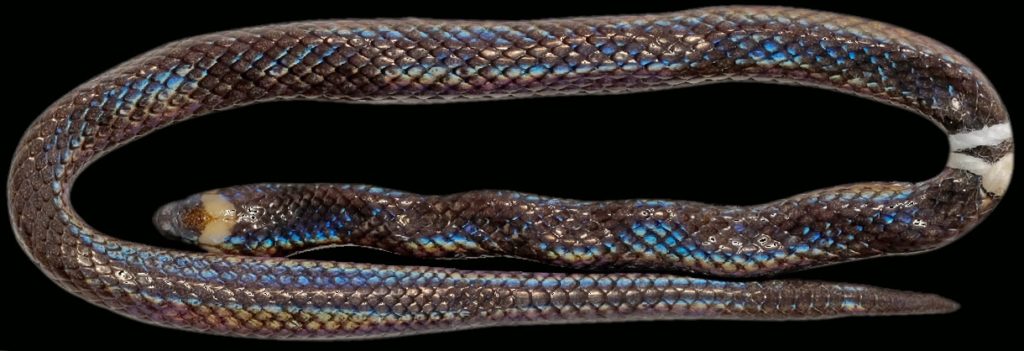New snake species: Scientists say dwarf E. Visayas snake should have own genus

Waray Dwarf Burrowing Snake. Photo from Jeff Weinell Twitter post.
MANILA, Philippines — A new snake species believed to be endemic in the Philippines has been discovered to be a part of a new genus, which means that it has distinctive features that differentiate it from other existing snake species in the world.
A paper from University of Kansas graduate research assistant Jeffrey Weinell and colleagues Daniel Paluh, Cameon Siler, and Rafe Brown claimed that the Waray Dwarf Burrowing Snake — known to be native to the Samar and Leyte islands hence its name — has some characteristics that are very distinct to its previous classification.
According to the study, the Waray Dwarf Burrowing Snake — now classified part of the new genus Levitonius, as a Levitonius mirus species — shares multiple skeletal characteristics with close relatives Myersophis and Oxyrhabdium.
However, it differs in terms of size, as the maximum total length was measured at 172 millimeters, making it the smallest known species in the Elapoidea family.
Due to its size — measuring less than seven inches — it feeds mostly on earthworms.
“Molecular data support Levitonius, new genus, to be most closely related to Myersophis and Oxyrhabdium, and it shares multiple skeletal characteristics with these genera; Levitonius, new genus, differs from all of these taxa in body size, scalation, and other characters,” said the paper, published last December 23.
“Skeletal and other phenotypic data suggest that Levitonius, new genus, is fossorial and likely has a diet that is specialized on earthworms. Levitonius mirus, new genus, and species has a maximum total length of 172 mm and is at present the smallest known species in Elapoidea,” it added.
Weinell announced the availability of their peer-reviewed paper in a tweet, sharing the link of the open-access study.
Check out this new GENUS and species of snake from the Philippines! Levitonius mirus. It was great working with @danpaluh and others to finally get this published! #Philippines #snakes #newspecies #herpetology https://t.co/rvqSQWawD0 https://t.co/98Sh5U1ZFR
— Jeff Weinell (@jeffweinell) December 23, 2020
In the journal, Weinell and his associates provided various models and results, from CT scans to X-rays of skeletal compositions, observations, DNA samples, and analyses which back up the need to assign a new genus for the Waray Dwarf Burrowing Snake.
What these findings bring, the researchers said, is the need to further study Samar and Leyte’s biodiversity to assess properly how the country’s fauna developed.
“Our results highlight the need for future work on Samar and Leyte Islands, which have received relatively little attention from systematists, in part because of a prevailing biogeographic paradigm that predicted (not necessarily correctly) that these islands would simply have a nested faunal subset of the Mindanao faunal region land vertebrates,” the study said.
“The discovery of a strikingly distinct and phylogenetically divergent snake lineage on these landmasses joins numerous related studies calling for a wholesale reconsideration of the Pleistocene Aggregate Island Complex model (the PAIC paradigm of diversification) biogeographic framework,” it added.
/MUF
Disclaimer: The comments uploaded on this site do not necessarily represent or reflect the views of management and owner of Cebudailynews. We reserve the right to exclude comments that we deem to be inconsistent with our editorial standards.
